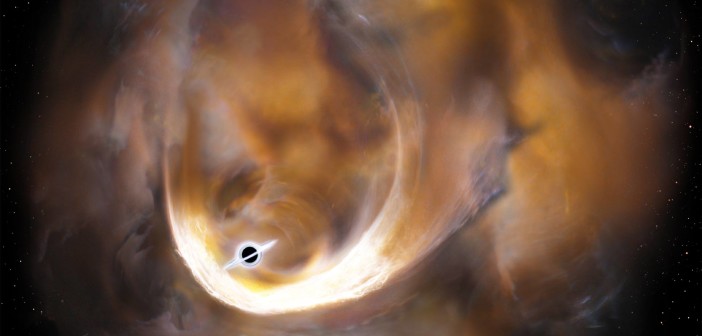Editor’s note: In these last two weeks of 2016, we’ll be looking at a few selections that we haven’t yet discussed on AAS Nova from among the most-downloaded papers published in AAS journals this year. The usual posting schedule will resume after the AAS winter meeting.
Signature of an Intermediate-Mass Black Hole in the Central Molecular Zone of Our Galaxy
Published December 2015
Main takeaway:
Tomoharu Oka (Keio University, Japan) and collaborators discovered what they believe is the signature of a 100,000-solar-mass black hole lurking just 200 light-years from the center of our galaxy. If this interpretation is correct, this black hole would be the second-largest in our galaxy (after the supermassive black hole Sgr A* in the Milky Way’s center).

Observations of the Milky Way center (a), with a zoom-in view of the gas cloud CO–0.40–0.22 (b). [Oka et al. 2015]
Why it’s interesting:
Intermediate-mass black holes — those with mass between 100 and 100,000 solar masses — are a bridge between the commonly observed stellar-mass black holes and supermassive black holes. Theory says that they should exist, but we haven’t yet found any definitive evidence of them.
About the discovery:
Oka and collaborators’ detection was actually not of the black hole itself — no compact source is visible in the area — but of the strange gas cloud CO–0.40–0.22. This cloud has an unusually broad velocity dispersion without a visible cause. The authors model the cloud to demonstrate that its properties could be reproduced if it were flung by a strong gravitational source of 100,000 solar masses, which must be both compact and invisible.
Citation
Tomoharu Oka et al 2016 ApJL 816 L7. doi:10.3847/2041-8205/816/1/L7


1 Comment
Pingback: the 2nd largest BH in the MW?